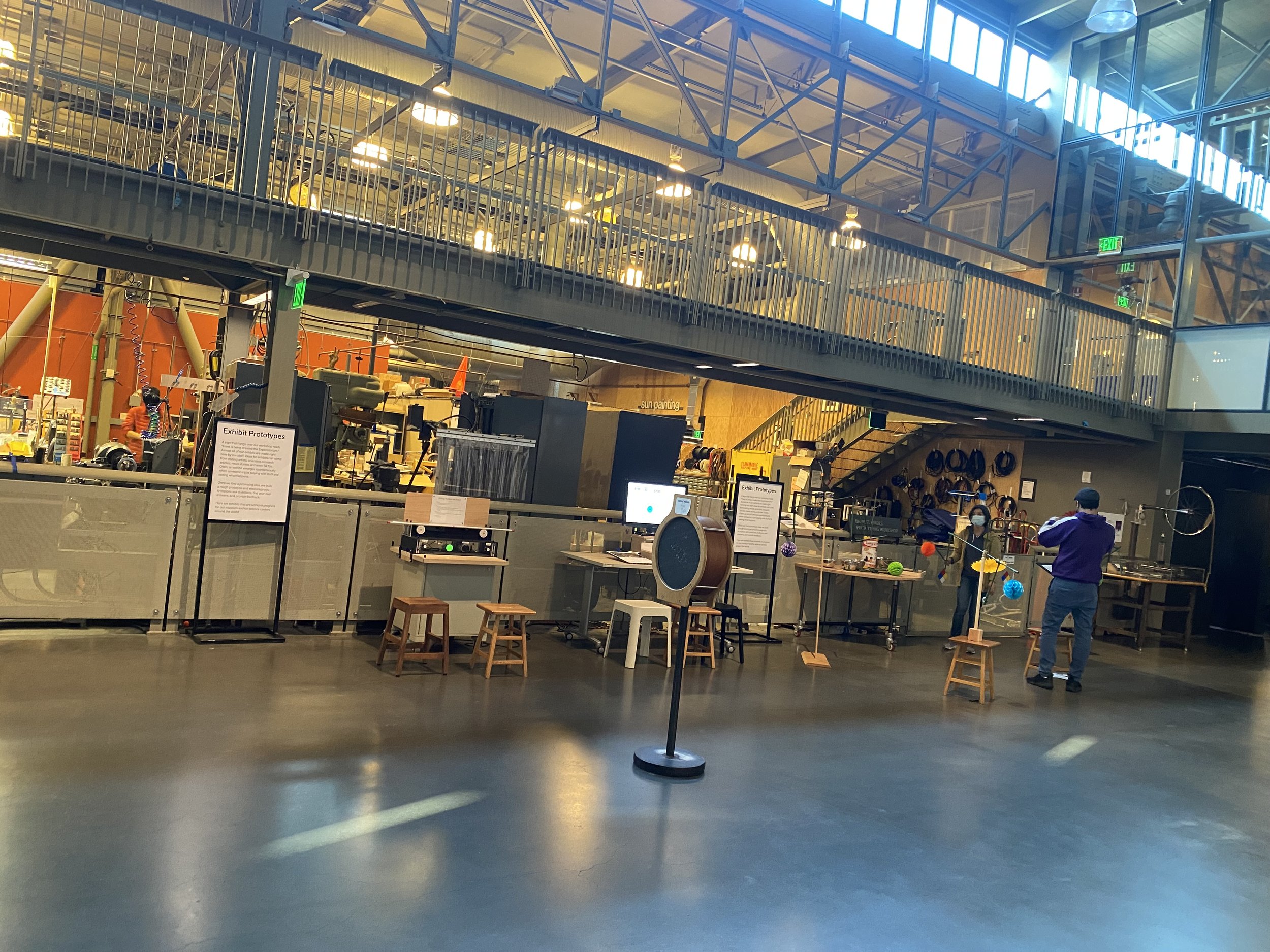Exploratorium Residency Week One
I’m spending the month of February at the Exploratorium in San Francisco doing a residency with the Tinkering Studio. We’re working on a project to develop unfacilitated or ‘lightly facilitated’ tinkering experiences for the museum floor and a network of partners. These ‘uftes’ are going through many iterations of collaborative prototyping, live testing with visitors and refinement over a period of several months and we’re trying to document and keep track of the process as much as possible.
I arrived at the Learning Studio (a prototyping space for staff at the Exploratorium) and unpacked a suitcase of materials. I also got a bunch of supplies shipped to the museum ahead of time (as well as raided the fully-stocked blue room).
We spent a few days refining some of the elements that I had been working on over the past few weeks in Germany and Italy. I cut down garden stakes on the horizontal bandsaw, we went through a couple versions of a balancing point and (partially) stabilized the motor piece with locking nuts.
On Friday we had our first opportunity to bring out a collection of parts and test the experience on the floor with museum visitors. We learn so much from watching people play with the elements and talking with them about the experience.
A few takeaways were that it was easy to collaborate and people made connections to constructing kinetic art. One of the main technical challenges was that pushing the pieces together and pulling them apart was really difficult and introduced an unproductive level of frustration. The motors still were too fragile on the floor so I’m interested in adding them to the experience for next time.
In the meantime, we also have continued experimenting with a second ‘ufte’ themed around sound and rhythm mechanisms. We’re inspired by an old exhibit called mighty rhythm king for analog sound sequencers as well as the Fire the Inventor’s ensemble automata kit for it’s modularity.
Last week we had a prototyping session in person (with Ryoko and Steph joining over zoom) and we brought a few of these ideas into physical form. Some of the questions that we’re thinking about is what materials to use as sound makers, how many rhythm mechanisms should be on one element and whether it’s better to use cams or pegs to trigger the sounds. Having some physical prototypes helped us talk through the affordances and drawbacks for different configurations.
And being in person really adds something to the experience. For example after making the designs, Sebastian and Erica jammed out a bit with the contraptions, showing some fun possibilities for collaborative performance. I hope that we can create these types of experiences for visitors.
For week two we’re hoping to refine the sound machines prototypes, test out new configurations for balance and gather materials for our final two ‘uftes’ (whirligigs/windmills and shadow remix). I’m excited for the extended time to discuss ideas, build together and user-test these new tinkering experiences here at the Tinkering Studio.
The LEGO Playful Learning Museum Network initiative is made possible through generous support from the LEGO Group.













